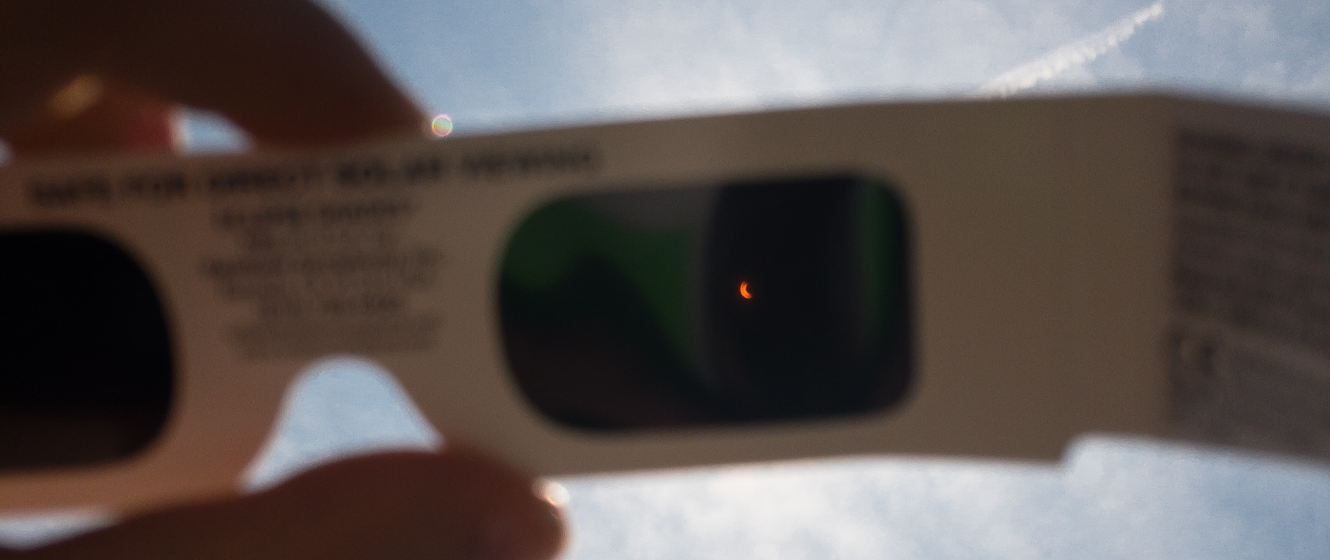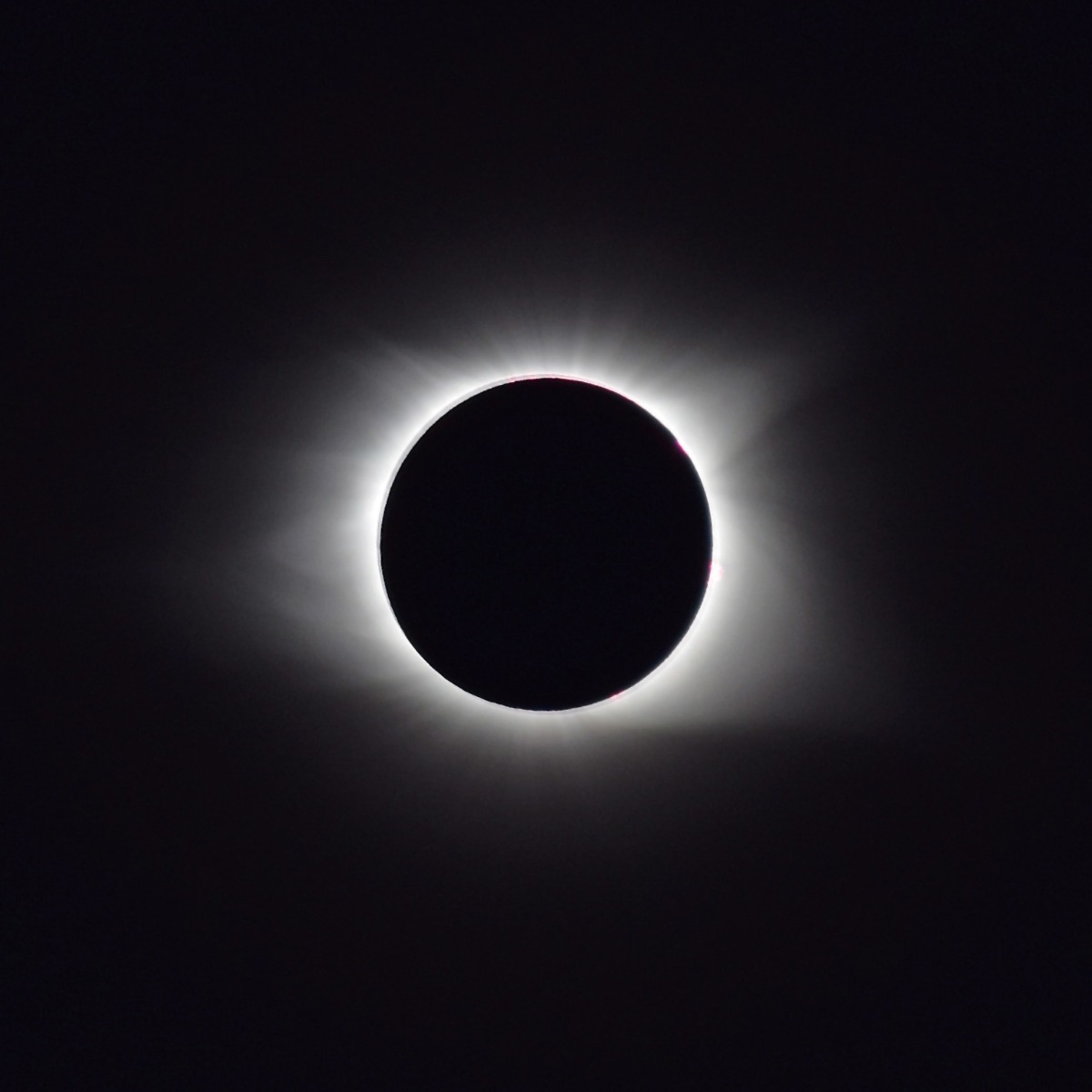
A total solar eclipse is one of the most awe-inspiring events the universe has to offer. A rare and breathtaking spectacle, an eclipse can only occur when the Earth, Moon, and Sun are perfectly aligned. As the Moon moves between the Sun and the Earth, it casts a shadow on the Earth’s surface, and anyone standing within the path of the shadow will experience totality.
At High Point Scientific, we believe that astronomy is more than just a hobby. It's a passion, a lifelong pursuit of knowledge and wonder that never fades. And there's no better way to experience the beauty and mystery of the universe than by witnessing a solar eclipse.
We want to share our knowledge and expertise to help you understand how to prepare for a solar eclipse, and most importantly, how to witness it safely. More than anything, we want you to feel the excitement and wonder that comes with witnessing a celestial event you might only experience once in your lifetime.
Preparing for a Solar Eclipse
Preparing to witness a solar eclipse is an exciting but serious business. It requires careful consideration of timing and location, as well as the necessary equipment to view it safely.
Timing and location are critical factors because the visibility and duration of a solar eclipse can vary significantly depending on where you are. For example, during the 2017 total solar eclipse, the path of totality crossed over a narrow swath of the United States, while other areas experienced only a partial eclipse.
Checking the time and location of the eclipse can help ensure you are in the right place at the right time. Xavier M. Jubier’s Interactive Google Maps is a great resource for this purpose, and can be invaluable in helping you figure out the exact timing from any chosen location.
To view a solar eclipse safely, you must always use the appropriate equipment. More than anything, you should NEVER look directly at the Sun without eye proper protection, either prior to the eclipse or during the partial phase. The best way to view a solar eclipse is through eclipse glasses or a solar filter attached to a telescope or binoculars. These filters protect your eyes from harmful solar radiation, and make it possible to see the eclipse without damaging your eyesight.
It’s important to note that not all solar filters or glasses are created equal, and to fully protect your eyes, you should make sure you purchase eclipse glasses or filters that are certified to the ISO 12312-2 standard. Avoid purchasing glasses or filters from unknown vendors, and never use regular sunglasses, exposed film, or homemade filters to view an eclipse.
At High Point Scientific, we sell ISO-certified eclipse glasses that you can use to safely observe the solar eclipse!
If you want to observe a solar eclipse through something more optically powerful, such as binoculars or a telescope, you’ll need a solar filter. These work in a similar manner to eclipse glasses, but are designed to be secured to the front of your telescope instead.
Before purchasing your solar filter, we strongly recommend measuring the exterior diameter of your optical tube assembly (OTA), as it won’t necessarily match its aperture. More specifically, the aperture doesn’t take into account the thickness of the tube. For example, if you have a telescope with an aperture of 8 inches, the tube itself may be a little larger.

While we offer returns on glass solar filters, we do not offer returns on solar filters made of film, so if you’re looking to buy a film solar filter, you’ll need to ensure the exterior diameter of the telescope tube is correctly measured first. If you’re unsure how to do this, check out this article on measuring your telescope for assistance.
Finally, be prepared to handle the crowds that may gather to witness a solar eclipse. If you’re planning to view the eclipse from a popular viewing location, arrive early to secure a spot and be prepared to deal with traffic and long lines. Bringing food, water, and a comfortable chair or blanket can help to make the experience more enjoyable.
Remember, witnessing a solar eclipse can be a once-in-a-lifetime experience, so take the necessary precautions and make the most of this rare celestial event.
Observing a Solar Eclipse
PLEASE NOTE: AT NO POINT DURING AN ANNULAR ECLIPSE OR WHEN THE SUN IS PARTIALLY ECLIPSED SHOULD YOU OBSERVE THE SUN WITHOUT EYE PROTECTION! It is only safe to observe the Sun without protection during totality.
How to safely view a solar eclipse with the naked eye
There are several ways you can safely observe a solar eclipse without potentially damaging your eyes. The easiest method is to use ISO-certified eclipse glasses, as mentioned above. Another option is to use a pinhole projector, which involves creating a small hole in a piece of cardboard and projecting the image of the eclipse onto another surface, such as a piece of paper or the ground. To make a pinhole projector, you’ll need to perform the following steps:
- Find a sturdy cardboard box, such as a shoebox or cereal box, and remove any tape or stickers from it.
- Cut a square hole in one end of the box, leaving at least an inch of cardboard around the edges.
- Cover the hole with a piece of aluminum foil slightly larger than the square hole, and tape or glue it securely in place. Make sure the foil has absolutely no crinkles.
- Use a pin or needle to poke a small hole into the center of the aluminum foil. The smaller the hole, the sharper the image will be.
- Tape or glue a piece of white paper or card inside the box, on the side opposite the pinhole.
- With the sun behind you, aim the box so that the pinhole projects the image of the sun onto the inside of the box. You may need to adjust your position until you see the solar eclipse on the paper inside the box.
Tips for capturing photographs or videos of a solar eclipse
Photographing a solar eclipse can be an exciting and challenging experience for photographers, and it’s essential to use the proper equipment and techniques to capture the eclipse safely and correctly. Broadly speaking, we can break this down into five steps:
- It is crucial to use a solar filter to protect the camera lens and sensor from the sun's harmful rays during the partial phases of the eclipse. Not doing so could potentially damage your camera sensor.
- You’ll also need a tripod to keep the camera steady during the shoot, especially when using longer exposure times.
- Use manual focus and exposure settings to have better control over the camera's settings. It’s also recommended you know which exposure settings you’ll need for the different phases of the eclipse - remember, you’ll typically only have a few minutes to capture totality.
- A telephoto lens or telescope with a focal length of at least 200mm or longer is a good choice for capturing the details.
- Finally, a remote shutter release, or automation software like Digicamcontrol, can be used to minimize camera shake, which will result in sharper images.
For a more in-depth look at how to photograph a solar eclipse, check out our article on How to Photograph a Solar Eclipse!
A solar eclipse is a rare and breathtaking spectacle like no other. We hope we have helped you to understand a little of the science behind an eclipse, how to prepare for it, and most importantly, how to witness it safely. With that in mind, grab your eclipse glasses, pick your location, review the timing, and get ready to witness a celestial event that will leave you in awe for years to come.

Learn More
Interested in learning more about solar and lunar eclipses? Not sure where to begin? Check out our Astronomy Hub!
This Article was Originally Published on 05/17/2023











